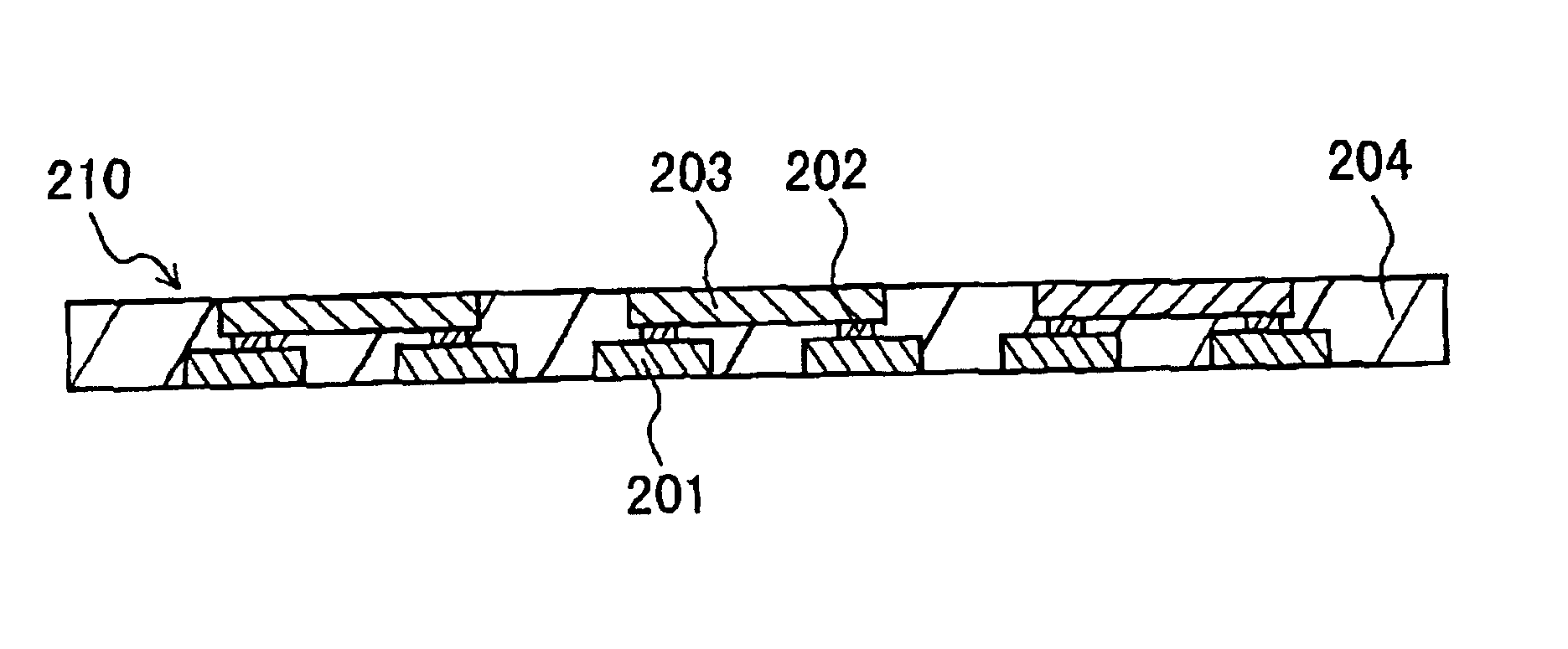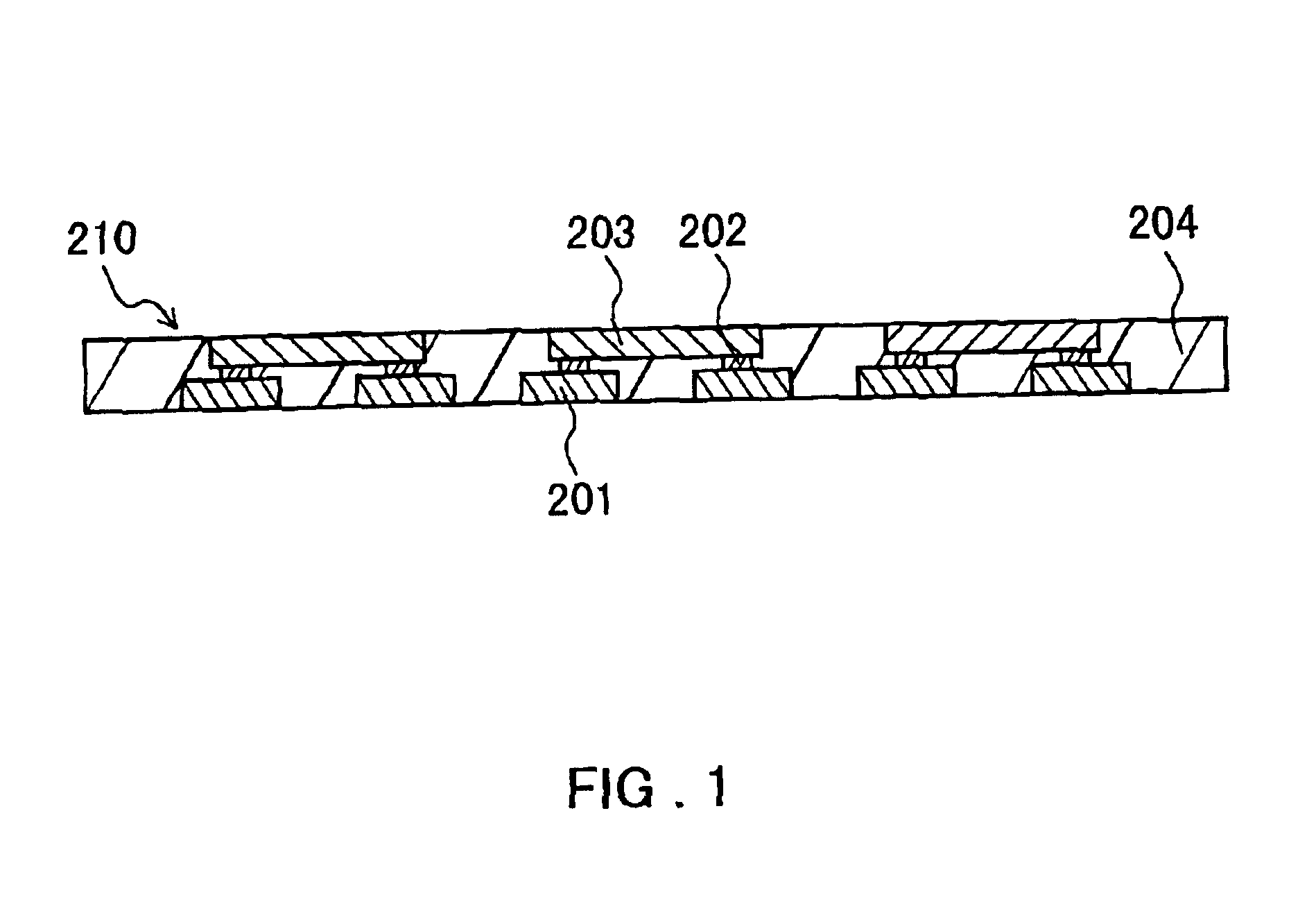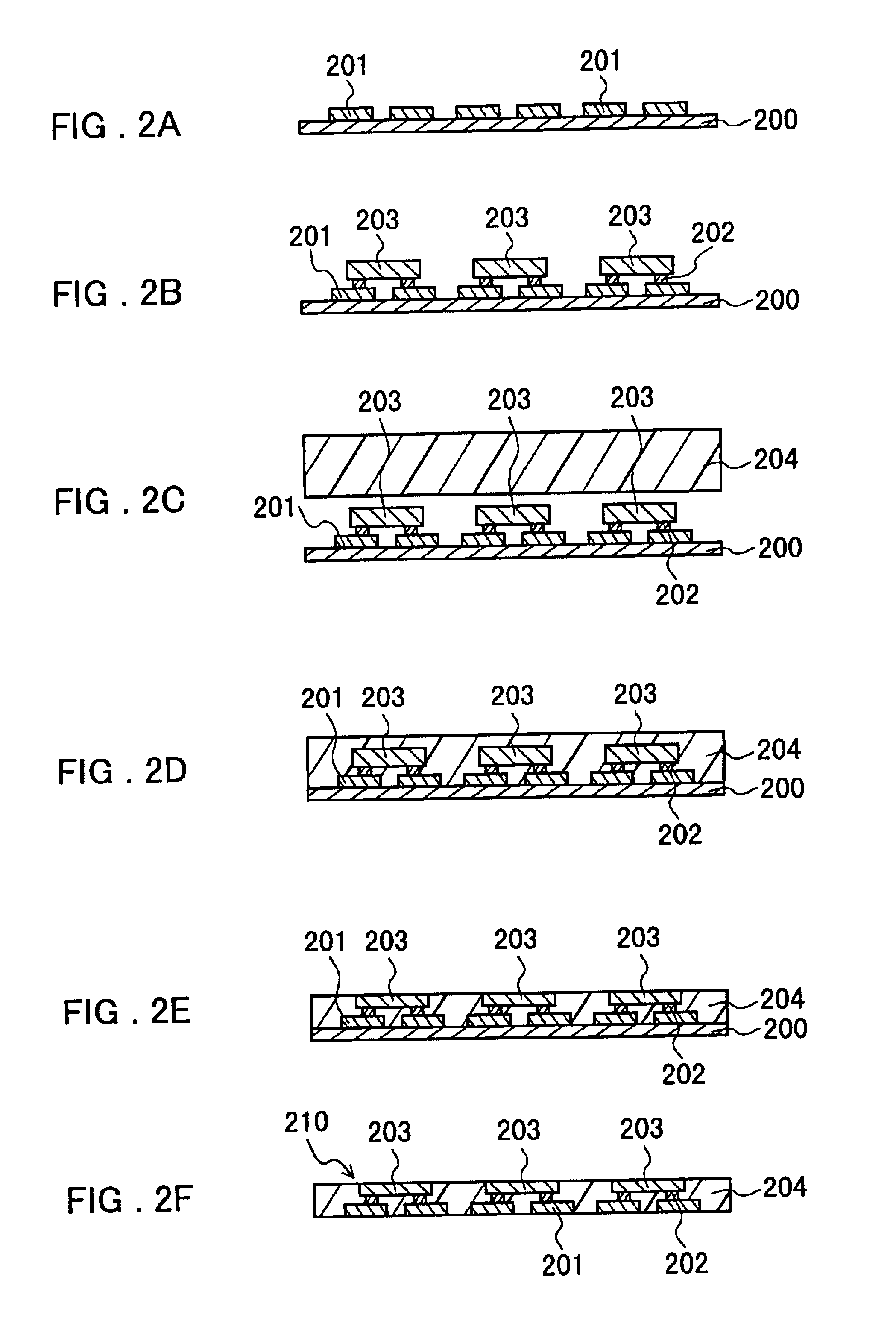Module with built-in electronic elements and method of manufacture thereof
a technology of electronic elements and modules, which is applied in the direction of printed circuit components, printed circuit non-printed electric components association, generators/motors, etc., can solve the problems of difficult to achieve high-density packaging, the inner structure of high-density mounted circuit boards having such a via hole cannot keep up with the miniaturization of semiconductor chips, and become an obstacle to the miniaturization of semiconductor packages, etc., to achieve the effect of manufacturing such an electric element built-in modul
- Summary
- Abstract
- Description
- Claims
- Application Information
AI Technical Summary
Benefits of technology
Problems solved by technology
Method used
Image
Examples
first example
The following is a description of an example corresponding to the first embodiment described above.
First, the method for producing the copper-foil support 200, shown in FIG. 2A, whose surface is provided with the wiring patterns 201 will be explained.
An existing copper foil for a circuit board can be used for the copper-foil support 200. Such a copper foil was produced by rotating a drum electrode in an electrolyte and continuously reeling in a copper plating layer formed on this drum. At this time, by adjusting the current value and the rotation speed for forming the plating layer, it was possible to form a copper foil with a desired thickness continuously. The thickness of the copper foil used here was 70 .mu.m.
Next, a peel-off layer for a later transferring was formed by forming an extremely thin organic layer on the surface of this copper-foil support 200 or by plating metal that is different from the copper, such as nickel or tin, thinly thereon. The transferring is possible ev...
second example
The following is a description of an example corresponding to the second embodiment described above. Illustrated is an example of manufacturing a semiconductor chip built-in module having a multilayered structure using an abraded semiconductor chip built-in module 210 that has been produced by a method similar to the first example.
As shown in FIG. 4A, the semiconductor chip built-in module 210 that had been produced in the first example, the prepreg 401 for the circuit board and the copper foil 405 were multilayered.
The prepreg 401 for the circuit board was obtained by impregnating a glass fabric with an epoxy resin so as to be in the B stage. The thickness thereof was 100 .mu.m. This prepreg was cut into a predetermined size, and then through holes having a diameter of 0.15 mm were formed at a constant pitch of 0.2 to 2 mm using a carbon dioxide gas laser.
Using a three roll mill, 85 wt % of spherical copper particles, 3 wt % of bisphenol A type epoxy resin (Epikote 828 manufactured...
PUM
 Login to View More
Login to View More Abstract
Description
Claims
Application Information
 Login to View More
Login to View More - R&D
- Intellectual Property
- Life Sciences
- Materials
- Tech Scout
- Unparalleled Data Quality
- Higher Quality Content
- 60% Fewer Hallucinations
Browse by: Latest US Patents, China's latest patents, Technical Efficacy Thesaurus, Application Domain, Technology Topic, Popular Technical Reports.
© 2025 PatSnap. All rights reserved.Legal|Privacy policy|Modern Slavery Act Transparency Statement|Sitemap|About US| Contact US: help@patsnap.com



